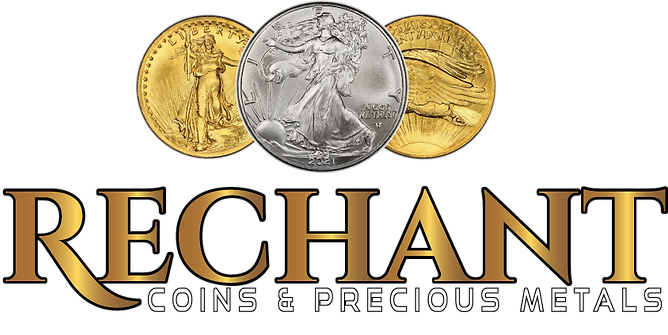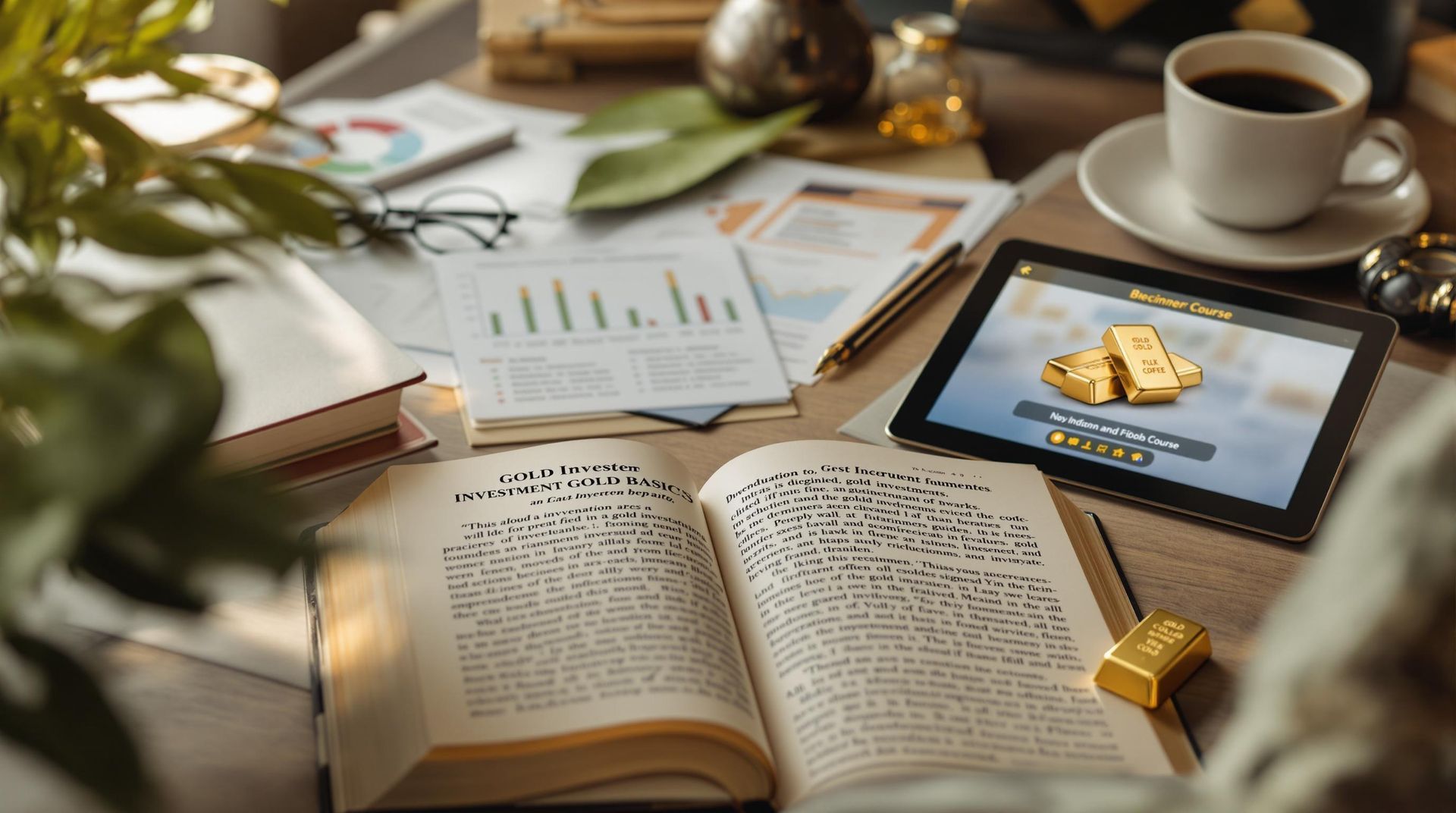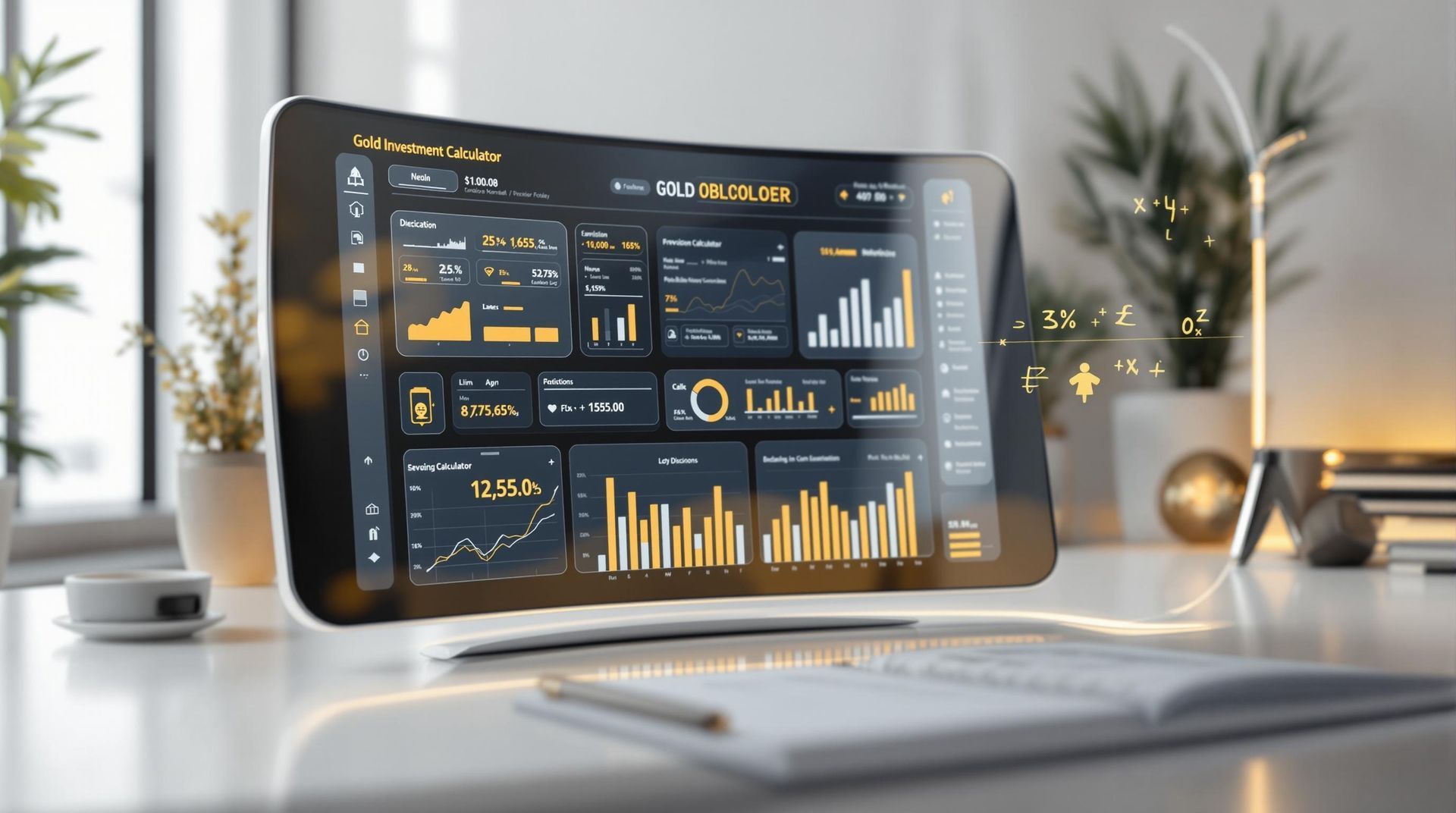Gold Investment Trends 2025 Insights
Curious about where the gold market is heading in 2025? As a safe-haven asset, gold continues to shine during periods of economic uncertainty. With central banks ramping up purchases and investor demand growing, this precious metal remains a go-to option for portfolio diversification.
Industry experts like Rechant Coins and Precious Metals, renowned in Palm Beach County since 1975, provide invaluable guidance for those looking to invest in gold.
Ready to explore the opportunities awaiting gold investors this year? Read on as we break down the key trends and strategies shaping the future of this sought-after asset.
Click here to learn more about: for sale now
Gold Market Overview 2025
Gold prices are expected to reflect dynamic shifts throughout 2025, driven by an evolving mix of investment demand and global market fluctuations.
The World Gold Council highlights ongoing increased demand, with central bank purchases reaching record highs that signal confidence in gold. This creates investment opportunities for those seeking a dependable store of value.
Geopolitical and Economic Influences
Persistent inflation concerns and geopolitical tensions continue to influence the gold price outlook.
Whether it’s the impact of interest rate policy shifts or market volatility, investors are turning to gold as a proven hedge against uncertainty. For example:
- In Asia, rising jewelry demand reflects economic growth and cultural preferences for precious metals.
- In North America, gold ETFs are gaining popularity as an accessible option for portfolio diversification.
- Globally, physical gold investments remain a top choice for those wary of market instability.
Investment Strategies for 2025
Whether you’re a seasoned investor or exploring ways to buy gold, this year offers plenty of opportunities to align with the gold market trends. Experts recommend strategies like:
- Allocating a portion of your portfolio to physical gold for a tangible safe haven asset.
- Exploring ETFs for convenient exposure to spot price movements.
- Partnering with trusted dealers like Rechant Coins and Precious Metals for rare coins and bullion acquisitions.
Pro insight: Historical data shows that gold prices tend to rise during periods of economic uncertainty, making it a valuable addition to investment portfolios. Don’t miss out on these trends in
As you plan your investment objectives, consider the price movements and supply and demand dynamics influencing the gold industry. The outlook for gold remains positive, providing a unique chance to build resilience amid global economic uncertainty.
Key Drivers Impacting Gold Prices
The gold price outlook is intricately shaped by a combination of economic and geopolitical forces. One prominent factor is inflation, which tends to drive the price of gold higher as investors seek a reliable store of value in times of financial uncertainty.
Currency fluctuations, particularly shifts in the United States dollar, further influence gold's appeal, often drawing attention from investors looking to hedge their portfolios against volatility.
Central banks around the globe also significantly impact the gold market.
For instance, recent increases in gold reserves by major central banks signal a renewed confidence in its stability as a safe haven asset.
Geopolitical challenges, such as trade tensions or military conflicts, have historically led to increased investor demand for gold as a secure investment during times of crisis.
“Gold continues to serve as a hedge against economic uncertainty, inflation, and turbulence across global markets, reinforcing its value in both investment portfolios and as a safe haven asset. ”
Ultimately, careful observation of these factors—economic policies, global instability, and central bank activities—can help investors make informed decisions regarding gold investing. These elements collectively contribute to fluctuations in the spot price of gold and offer valuable insights into the future of the gold market.
How Demand Shapes The Gold Industry
The dynamics of gold demand trends play a pivotal role in shaping the gold industry’s growth and stability.
For example, the enduring appeal of gold jewelry in nations like India and China remains a driving force behind consistent consumption. Jewellery demand in these regions reflects cultural traditions, solidifying gold's position as a key commodity within local economies.
Beyond consumer preferences, industrial applications bolster demand for this precious metal.
Gold's unique properties make it essential for use in manufacturing electronics, medical devices, and technology innovations.
Emerging markets are also showing increased demand, fueled by rising incomes and expanding middle classes across Asia and Africa.
These trends not only contribute to global gold demand but also highlight gold’s diverse utility beyond mere investment purposes.
“The interplay between traditional uses like gold jewelry and modern industrial needs underscores gold’s adaptability and enduring value in a changing world. ”
Challenges in meeting this demand, such as sustainable sourcing and ethical mining practices, also shape the industry's trajectory. Addressing these issues ensures stability in the global gold supply and demand chain while maintaining confidence in the long-term value of physical gold.
Together, these factors reinforce the gold industry’s importance in sustaining both economic stability and strategic investment portfolios.
Key Insights on Gold Prices and Demand
- Gold prices are influenced by factors like inflation, currency fluctuations, and geopolitical tensions.
- Central banks' increased gold reserves highlight its role as a safe haven asset.
- Gold demand is driven by traditional uses like jewelry in India and China, as well as industrial applications in electronics and medical devices.
- Sustainable sourcing and ethical mining practices are essential to maintaining confidence in the gold industry.
The Role Of Central Banks In Gold Investments
When it comes to global finance, central banks have a profound impact on the gold market and investor sentiment. Through consistent gold reserve accumulation, institutions such as the Federal Reserve and European Central Bank demonstrate gold's enduring role as a hedge against economic uncertainty and inflation.
Reports from the World Gold Council highlight these gold purchases, reinforcing the metal’s value as a stable store of wealth.
Central bank policies directly influence the price of gold, especially during times of geopolitical tension or fluctuating interest rates.
By allocating reserves to physical gold, these institutions help stabilize the financial markets and indirectly shape investment strategies for private investors. Gold’s safe-haven appeal is amplified when monetary policies create pressure on gold prices, signaling a long-term demand for the metal.
This dynamic fosters confidence in gold as an investment across market cycles, ensuring its role in portfolios seeking protection against volatility.
Investment Strategies For Portfolio Diversification
When building a balanced portfolio, incorporating gold can offer both stability and risk mitigation, especially during times of economic uncertainty. Investors can access gold through various means, such as gold ETFs, coins, or bullion, ensuring their portfolio benefits from this reliable hedge against market volatility.
With gold prices expected to fluctuate throughout 2025, its appeal as a diversification tool remains strong.
Allocation Recommendations for Investors
Experts often recommend starting with an allocation of 10-15% in gold to capitalize on its resilience.
By reviewing historical data, it's evident that gold prices tend to rise during recessions or inflationary periods.
This trend makes gold a consistent performer for investors looking to protect their portfolios and achieve favorable rate of return outcomes.
Choosing the Right Type of Gold Investment
For those considering physical gold, options like bullion bars or coins provide tangible assets that can enhance portfolio stability. Meanwhile, gold ETFs offer liquidity and ease of trading, making them suitable for those seeking flexibility.
As investment demand for gold rises globally, consulting with experienced dealers like Rechant Coins and Precious Metals offers valuable insights into making informed decisions. Whether focusing on rare coins, gold jewelry, or investment-grade bullion, there are diverse ways to access the metal's benefits.
Ultimately, integrating gold into your portfolio isn’t just about reducing risk—it’s a proactive measure to navigate market uncertainty and leverage the opportunities presented by the shifting financial landscape of 2025 and beyond.
By working with trusted experts, you can ensure your investment portfolio is well-prepared to handle future challenges.
Gold Investments
- Central banks like the Federal Reserve and European Central Bank accumulate gold reserves to hedge against economic uncertainty and inflation.
- Gold prices are influenced by central bank policies, especially during geopolitical tensions and fluctuating interest rates.
- Experts recommend allocating 10-15% of a portfolio to gold for stability and favorable returns during economic downturns.
- Gold ETFs provide liquidity and flexibility, while physical gold like bullion bars or coins offers tangible asset stability.
Gold As A Hedge Against Uncertainty
When financial markets become unpredictable, gold stands out as a reliable safeguard for investors. As a safe-haven asset, gold shields wealth from the effects of inflation, market turbulence, and geopolitical pressures.
Its enduring value, often unaffected by currency devaluation, makes it a preferred choice for those seeking stability amidst economic chaos.
Historical data shows that gold prices tend to rise during times of increased economic uncertainty, further solidifying investor confidence.
Why Investors Turn to Gold
- Gold investment demand grows when traditional assets like stocks and bonds lose stability due to market volatility or fluctuating interest rates.
- Central banks worldwide consistently buy gold, increasing their reserves in response to political and economic risks.
- Unlike debt instruments like bonds, gold does not rely on credit stability, making it a safer store of value.
Diversifying with Gold
Diversification is key to managing risk, and gold plays a vital role in strengthening
investment portfolios. By incorporating gold, investors can mitigate the effects of
price volatility in other assets. For portfolios containing stocks, bonds, or even real estate, allocating to gold offers a hedge that reduces exposure to unpredictable market movements.
Investors can also explore
physical gold, such as coins or bullion, or modern options like
gold ETFs, which offer exposure without the need to store the asset. With the
outlook for gold expected to remain positive into
2025, it continues to function as a dependable asset, particularly during economic downturns or global instability.
Trends In Gold Jewelry And Demand
Across cultures and markets, gold jewelry holds a unique place that blends emotional value with financial significance. Whether tied to traditions or modern style trends, the demand for gold jewelry remains strong in both emerging markets and established economies.
Global Consumer Preferences and Cultural Influences
- In regions like India and China, gold demand is deeply rooted in traditions, with weddings and festivals driving purchases of intricate, high-value pieces.
- Western trends lean towards minimalistic and contemporary designs, where gold serves as a statement of understated luxury.
- Gold’s price influences buying behavior globally, as consumers navigate price fluctuations when purchasing high-value items.
Emerging Markets and Economic Drivers
The rise of middle-class spending in emerging markets is boosting
global gold demand trends. With increasing disposable income, consumers in these regions gravitate toward gold jewelry, often seen as both a luxury and an investment. Modern consumers are more conscious of ethical sourcing and sustainability, prompting demand for responsibly sourced
gold products.
Meanwhile, influencers and luxury brands continue to reshape preferences, sparking increased demand for exclusive designs and custom gold pieces. As a result, gold’s dual role as a
store of value and a cultural treasure fortifies its enduring appeal across buyer segments.
| Reasons to Invest in Gold | Gold Jewelry Trends |
|---|---|
| Gold acts as a hedge against inflation and market volatility. | Gold jewelry demand is driven by cultural traditions in regions like India and China. |
| Central banks increase gold reserves during economic risks. | Western markets prefer minimalistic and contemporary gold designs. |
| Gold ETFs provide modern investment options without storage needs. | Consumers are increasingly focused on ethically sourced gold products. |
The Impact of Interest Rates on Gold Prices
The rate of return on assets like bonds and savings accounts often climbs when the Federal Reserve raises interest rates, which can temporarily pressure the spot price of gold. Investors looking to diversify their portfolio may see gold as less appealing during such times, given its lack of yield.
Yet, this dip frequently creates opportunities for those who believe gold’s price will rise in the long term.
Central bank actions also play a pivotal role in shaping the gold market.
For example, sustained gold purchases reflect confidence in gold as a hedge against financial uncertainty.
Many investors turn to gold as an investment during times of inflation or economic unrest, underscoring its importance within a diversification strategy. Data shows that gold demand often surges during these periods, reinforcing its reputation as a safe haven asset.
How Global Monetary Policies Influence Gold
The World Gold Council has noted how shifts in monetary policies directly influence gold investment.
Lower interest rates, for instance, drive increased demand for physical gold and ETFs, as reduced yields in other asset classes boost gold’s appeal. Conversely, higher interest rates may trigger short-term volatility but also present buying opportunities for savvy investors evaluating gold’s price outlook.
Gold Supply and Demand Forecast 2025
The gold market in 2025 is expected to be shaped by several intersecting factors.
On the supply side, mining outputs from nations like China and Australia will likely remain steady.
Meanwhile, recycling is anticipated to grow, addressing supply constraints in the face of increased demand.
This aligns with trends showing gold prices tend to rise when supply tightens.
For demand, the consumption of gold jewelry is projected to increase, particularly in India, where cultural and economic factors drive purchases. The expanding use of gold in technology will influence overall demand trends.
Central bank acquisitions also remain a critical contributor to total gold demand, reinforcing confidence in its long-term viability.
Potential Market Movements and Price Trends
- Gold price outlook: Analysts suggest that in 2025, upward pressure on gold prices could be seen due to strong demand and constrained supply.
- Historical data shows that gold prices often respond positively to geopolitical and economic uncertainties.
- Investors looking to buy gold should consider strategies that align with their broader portfolio goals.
Gold continues to shine as a store of value, particularly during periods of uncertainty.
For those seeking exposure to gold in 2025, understanding gold demand trends and aligning investments with the market's movements will be key. The confidence that central banks and other institutions have demonstrated by increasing their holdings highlights gold’s enduring role as a financial asset.
Gold Market Trends
- Gold demand often surges during periods of inflation or economic uncertainty, reinforcing its role as a safe haven asset.
- Lower interest rates drive increased demand for physical gold and ETFs, boosting its appeal as an investment.
- Central bank acquisitions significantly contribute to total gold demand, reflecting confidence in its long-term viability.
- Gold prices tend to rise when supply tightens due to steady mining outputs and increased recycling efforts.
Evaluating Gold ETFs As An Investment Option
Looking for a modern way to invest in gold? Gold ETFs might be the answer. These exchange-traded funds offer a simple and efficient way for investors to gain exposure to the gold market, without the complexities of managing physical gold.
By trading on stock markets, they ensure high liquidity and seamless buying or selling, which adds flexibility to any investment portfolio.
Benefits of Investing in Gold ETFs
There are plenty of reasons why investors are turning to ETFs for their gold allocation:
- Low costs: Gold ETFs reduce expenses such as storage, insurance, and transportation often tied to holding physical gold.
- Portfolio diversification: They act as a hedge during economic uncertainty, mitigating the effects of market volatility.
- Ease of trading: Unlike physical gold, ETFs can be traded as easily as stocks on an exchange.
Risks to Be Aware Of
Of course, no investment comes without risks. With gold ETFs, investors must consider:
- Tracking errors: Sometimes, the performance of the ETF may not perfectly align with the gold price.
- Price fluctuations: Like all assets, the price of gold can experience volatility, influenced by global events and interest rate changes.
Still, given the rising demand for gold as a safe-haven asset and its role in combating economic uncertainty, gold ETFs stand as an attractive choice for many investors.
Insights From The World Gold Council
Curious about the latest trends in the gold market? The World Gold Council is your go-to resource. Here’s what their recent research reveals:
Gold Demand Trends
The global demand for gold has remained robust, with central banks playing a major role. Recent data from 2025 indicates significant gold purchases, driven by mounting economic uncertainty and geopolitical factors.
Confidence in gold is growing, as it’s seen as both a safe haven and a strong hedge against inflation and currency fluctuations.
Gold Price Outlook for 2025
Based on historical data, the gold price outlook for the coming years remains optimistic. The World Gold Council projects steady growth, supported by rising demand for gold-backed securities and increased global investor confidence. This trend suggests opportunities for those looking to invest in gold. Here's why:
- Geopolitical uncertainty: Ongoing tensions globally create pressure on other markets, making gold a safe-haven choice.
- Central bank policies: Interest rate changes often influence gold prices, presenting opportunities for strategic investments.
- Diversification benefits: Adding gold to your portfolio enhances stability, even during volatile times.
Staying informed with regular updates and reports ensures that both new and seasoned investors can make smarter, data-driven investment decisions.
| Benefits of Gold ETFs | Risks of Gold ETFs |
|---|---|
| Low costs: No storage or insurance needed | Tracking errors: May not perfectly match gold price |
| Portfolio diversification during economic uncertainty | Price fluctuations influenced by global events |
| Ease of trading: Buy and sell like stocks | Volatility due to interest rate changes |










